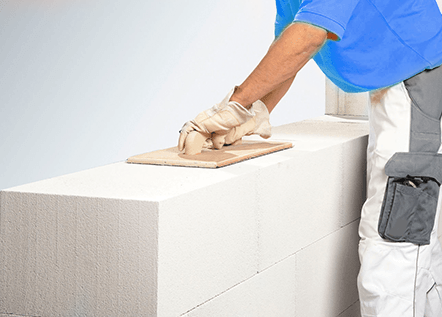AAC or Autoclaved Aerated Concrete first came into being in 1923, thanks to the efforts of Swedish Inventor Johan Axel Eriksson. The AAC is a cost effective and environment--friendly substitute of red clay bricks as construction material for making walls.
Information about the excellent properties of AAC that includes excellent thermal and sound insulation properties along with lightweight yet high load bearing capacity has now spread across Europe and beyond, leading to the demand of AAC. These blocks and panels have low cost of construction and are energy-efficient manufacturing and installation.
Approximate 80% of the volume in AAC blocks is air, making its weight just a third of a clay brick. The AAC block is formed on the reaction of aluminium with blended proportion of cement, gypsum, fly ash and lime. When hydrogen gas emanates, it imparts a robust honey-comb structure to AAC blocks. The curing process is not yet finished. On further processing under high-pressure steam, the blocks gain the required strength. In the production process, proportions are monitored closely to ensure consistency. To ensure consistency in the proportions production process is monitored closely.

AAC has growing market shares in several countries. More than 40% of all construction in UK and 60% of all construction in Germany accounts for AAC.
In India, the demand of AAC block has grown 10 fold in the past few years. Today, AAC is used as building material in all types of buildings. Capable of withstanding all weather conditions, it can be used external or internal walls. These can be efficient for basement walls, framed structures and loadbearing applications.